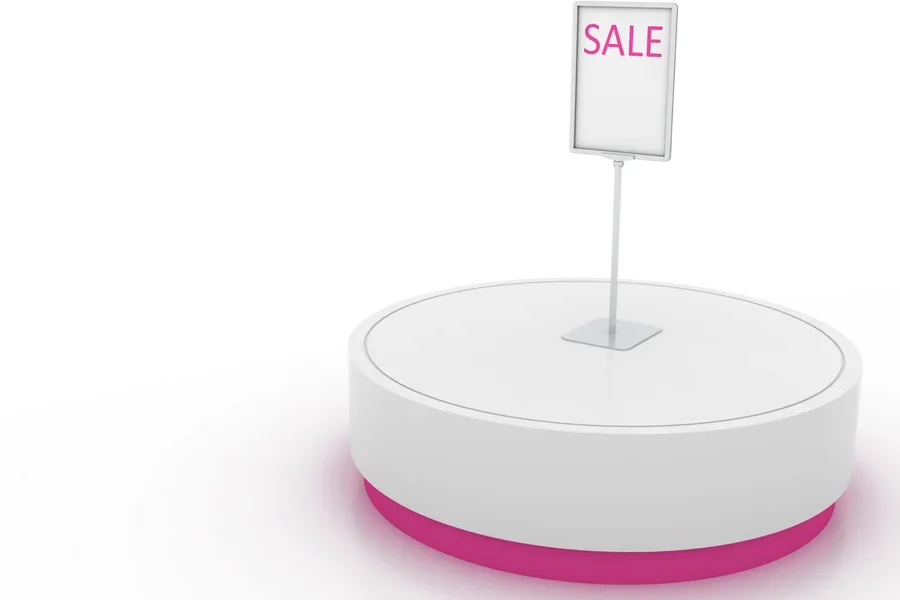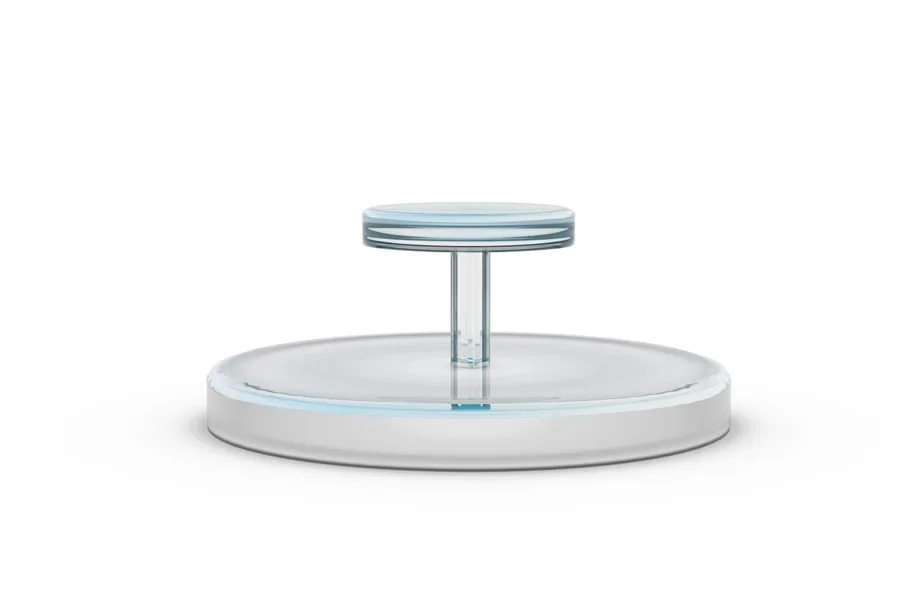Jewelers, bakeries, museums, brand activators, and trade-show exhibitors all have one thing in common: they want a Rotating display stand that smoothly rotates their products, trophies, or models. And a lot goes into choosing this machine. They’ll want a solution that effectively handles their product and displays all necessary information without requiring customer interaction.
And since businesses put a lot of thought into it, you’d have to do the same if you want to sell it to them. Even if you’re planning to buy one for yourself, this guide will cover everything to consider before purchasing a rotating display stand.
Table of Contents
Know your customer groups
What to consider before buying a rotating display stand
1. Pick a size range
2. Weight limits
3. Drive types you should offer
4. Speed
5. Noise ratings
6. Power options: plug, battery, or hybrid
7. Lighting integration
8. Compliance and paperwork
Final thoughts
Know your customer groups
If you’re going to stock turntable stands, you’ll need to know who you’re selling to first. So, before examining motors or weight ratings, list the types of buyers who may come to you:
- Fine jewelry stores prefer slow, silent motion, small diameters, and luxurious finishes
- Toy and gadget shops like medium speed, bright colors, and strong plastic tops that resist fingerprints
- Trade-show exhibitors need large platforms, adjustable speed, and quick assembly for travel
- Museums and galleries demand perfect silence, low vibration, and certificates that cover electrical safety
- Photographers and video creators seek smooth turntables with precise speed control for camera synchronization
Write the different groups down so that when you compare the stands later, you can match each model to at least one group. If a model fits none of them, it’s probably best not to stock it.
What to consider before buying a rotating display stand
1. Pick a size range

You cannot stock every diameter the market offers. Instead, cover three brackets:
- Small disks, up to 160 millimeters in diameter, are ideal for rings, watches, and small figurines
- Medium, ranging from 180 to 300 millimeters, are ideal for plates, shoes, and perfume bottles
- Large, ranging from 320 to 500 millimeters, are perfect for handbags, small mannequins, or scale models
Measure a few sample items from your target groups so that these numbers remain grounded in reality. Keep at least one model in each bracket so you never have to tell a buyer you have nothing that fits.
2. Weight limits

Manufacturers always list the maximum load of a stand in kilograms, but it’s advisable to add a safety margin. A toy store might place a stack of boxed action figures on a stand for a photo session, only to tip the real load higher than they plan. For this reason, it’s better to offer consumers stands rated at least 30% above the weight most customers quote.
That margin reduces motor strain and cuts failure rates, which also protects your reputation and lowers your return rate. And don’t forget off-center loads – tall vases or award statues may lean to one side as they rotate.
Ask each supplier for an off-center or eccentric-load figure. If they cannot provide it, assume the safe load is half the centered number. Place warning cards inside the box to ensure buyers understand the correct placement, which helps avoid blame when someone mounts a marble bust and it’s off balance.
3. Drive types you should offer
Businesses trust you to explain the difference between drive systems, especially if they aren’t shopping online. And if they are shopping online, they’d expect detailed descriptions to help them make informed decisions. So, keep at least one of each of the types below:
- Direct drive: This drive type is smooth and low-maintenance, but it comes at a higher cost. You can offer these to jewelers and galleries.
- Belt drive: This type is suitable for vibration damping and easy part swaps. They may be appealing to photographers who need silent videos.
- Gear drive: This drive type offers strong torque and is highly reliable at low speeds. You can stock these for heavy-duty retail props or craft show sculptors.
Train sales staff to place the same weighted sample on each model, allowing customers to see and hear the difference between them. That short demo often closes the sale and builds confidence.
4. Speed

Speed determines who buys the stand. You’ll need fixed-speed models for clients who dislike adjusting knobs – these work well in chain stores where staff turnover is high. Also consider variable-speed models with clear markings or digital readouts, which are suitable for film studios and high-end brands that require adjustable rotation to match their lighting setups.
Remember to ask suppliers for speed and accuracy data. A stand that drifts from one revolution per minute down to point eight after thirty minutes will ruin a time-lapse shot for photographers. However, if you mark that precision on shelf talkers or in online descriptions, professional buyers will see that you are knowledgeable about the details.
5. Noise ratings

Never use the word “quiet” on its own in your marketing. You’ll need the details, so request decibel measurements taken at a distance of 30 centimeters. Note that under 35 decibels is suitable for most retail floors, while under 25 decibels suits the needs of galleries. Stock at least one model under 25 for noise-sensitive buyers, and remember to print the rating on the box.
6. Power options: plug, battery, or hybrid
Here are three powerful solutions to offer:.
- Standard plug-in: This power option is the workhorse for stores that already have cable management built into their counters
- Battery only: This power type is perfect for glass cases on central pedestals or pop-up booths with no floor access
- Hybrid units: These models feature swappable battery packs and wall adapters, enabling buyers to switch displays between the studio and the show floor
In addition, consider carrying spare battery packs and selling them as add-on items. Extra packs can increase the total order value and keep the buyer tied to your store for future accessories.
7. Lighting integration

Although not every business needs LED stands, one model with built-in, dimmable, 12-volt LEDs can help with upselling. So, choose one that offers a switchable warm and cool color temperature. To spice things up, you can place it on a demo counter with a crystal paperweight so customers instantly see the glow effect. Even if clients already own light boxes, you still have a full range of non-lit stands ready.
8. Compliance and paperwork
Corporate buyers often need proof of safety marks. So, keep copies of UL or CE certificates in a shared drive and email them on request. You can also list IP ratings if the stand might sit near fountains or humid floral displays. Being prepared speeds purchase orders through compliance departments and sets you apart from competitors who need days to chase paperwork.
Final thoughts
Stocking Rotating display stands for business buyers is not about carrying every model on the market. It is about understanding the real tasks those buyers face and holding a focused range that covers those tasks with no waste.
Identify key customer groups by matching disk size and weight limits to everyday items. Offer a clear choice of drive types and speed options. Watch decibel numbers, not vague “quiet” claims. Provide plug, battery, and hybrid power as well as surface and lighting options. Emphasize safety, ease of assembly, and maintenance support. Finally, back every sale with paperwork and parts, and use demos to turn features into felt benefits.
If utilized correctly, these nifty gadgets help products to spin, attract customers, and profit for your business.



